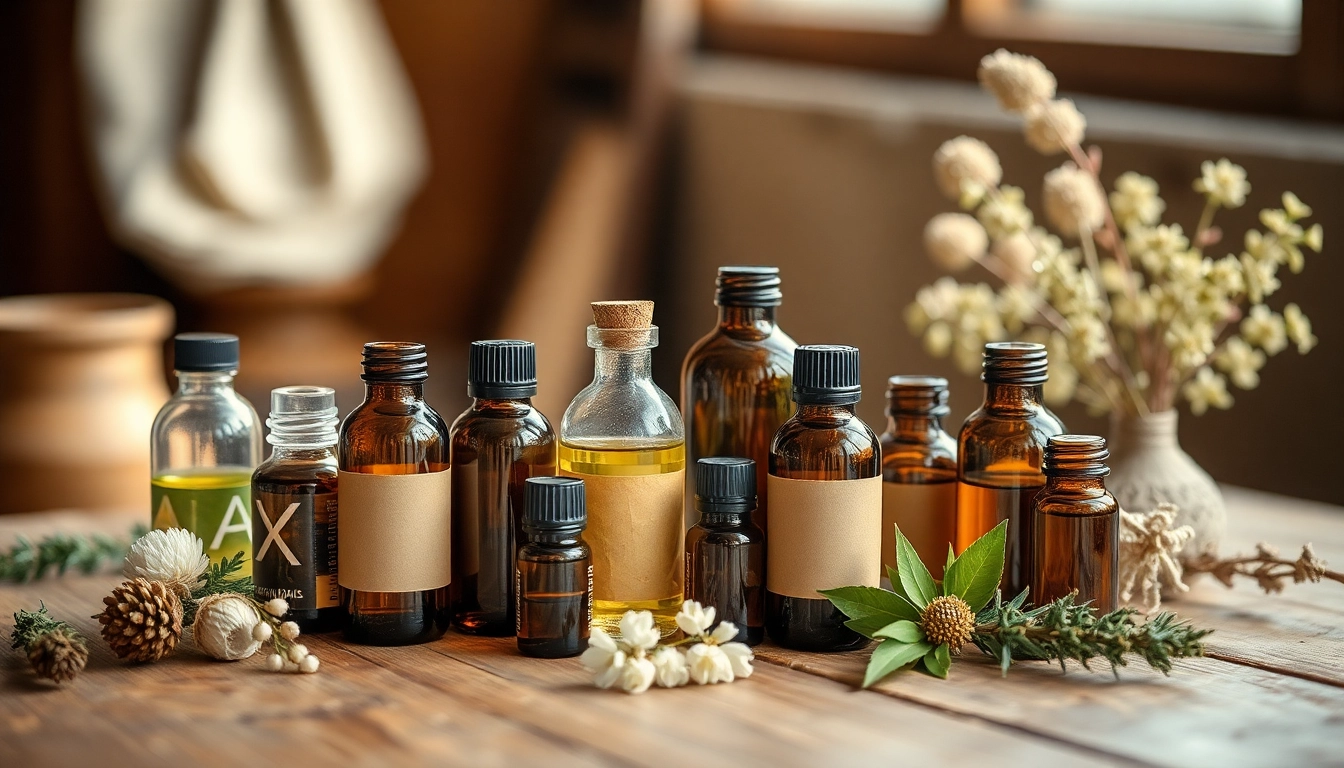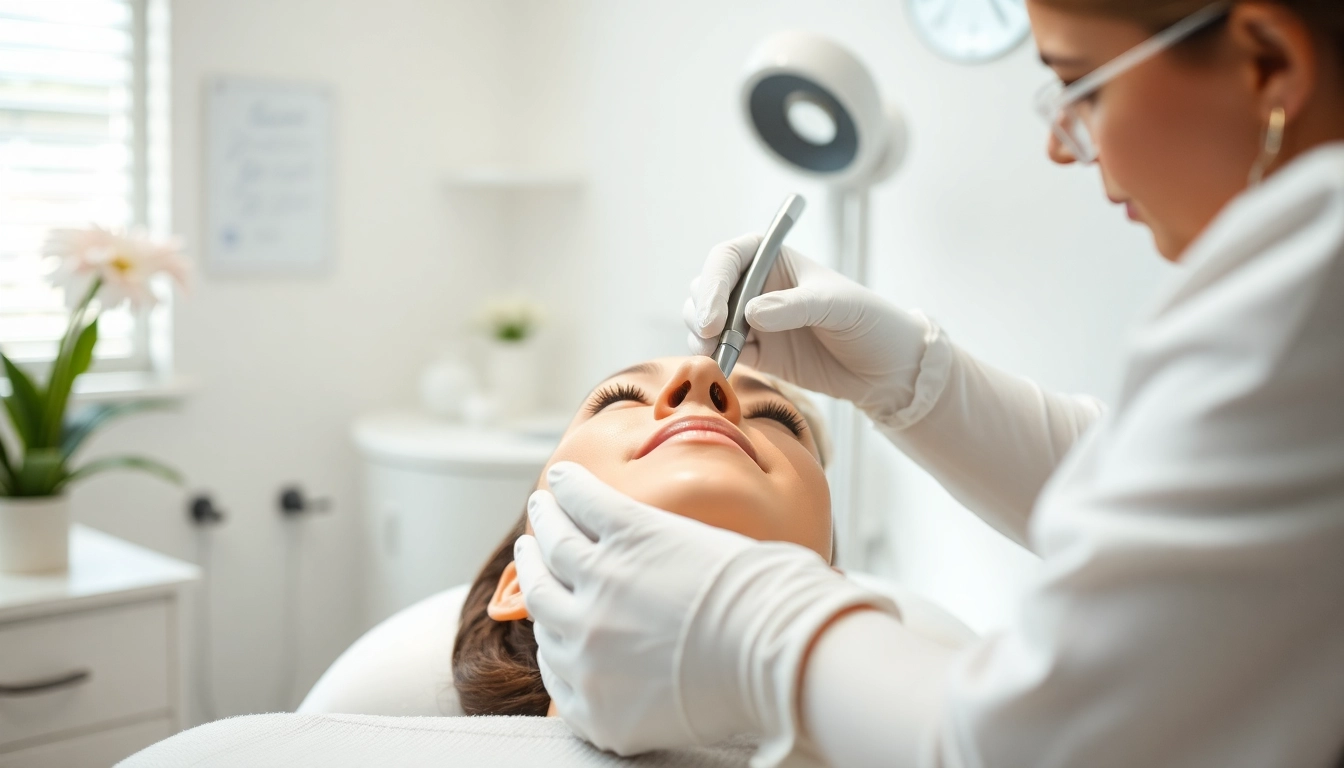Understanding Essential Oil: A Comprehensive Guide
What is Essential Oil?
Essential oils are concentrated extracts obtained from various parts of plants, including flowers, leaves, stems, roots, and fruits. These oils carry the unique fragrance and properties of the plant they are derived from and are used in countless applications ranging from aromatherapy to natural remedies. Unlike fatty oils, essential oils are volatile, meaning they evaporate quickly and have a strong aroma. They are typically used in low concentrations due to their potent characteristics. To begin your journey in the world of essential oils, it’s essential to understand their nature and the various facets of their uses, from relaxation to wellness.
Essential oils have gained popularity for their application in stress relief, physical health, and even skincare. In recent years, the market has expanded, allowing for numerous formulations and blends, promoting various therapeutic benefits. If you’re curious about specific oils or their multi-faceted benefits, consider exploring the offerings at Essential oil suppliers for a selection that suits your needs.
History and Uses of Essential Oil
The use of essential oils dates back thousands of years. Ancient civilizations such as the Egyptians, Greeks, and Romans utilized various plant extracts for medicinal, cosmetic, and spiritual purposes. The Egyptians are known for their mummification processes, which employed oils like myrrh and frankincense to preserve the bodies and harness protective qualities. Similarly, the Greeks, particularly Hippocrates, acknowledged the importance of essential oils for healing purposes, establishing a foundation for aromatherapy.
As time evolved, essential oils found their way into different cultures and practices across the globe. In traditional Chinese medicine, various essential oils are employed to balance energy and improve health. The growing interest in holistic health and natural remedies has led to a renaissance in the popularity of essential oils, especially in the fields of aromatherapy, natural cleaning solutions, and wellness applications.
Extraction Methods of Essential Oil
The extraction of essential oils is a vital process that influences oil quality and potency. There are several methods employed in obtaining these oils, each with its unique characteristics and outcomes:
- Steam Distillation: The most common method, steam distillation involves passing steam through plant material, where the heat causes the essential oils to evaporate. The steam and oils are then condensed back into liquid form, separating the oil from the water.
- Cold Press Extraction: This technique is predominantly used for citrus fruits. The rind is pressed mechanically to release its oils without the application of heat, preserving the delicate properties of the oil.
- Solvent Extraction: A chemical solvent is used to extract essential oils, resulting in a more concentrated product. However, this method may leave traces of solvents, which can be a concern for purity-conscious consumers.
- CO2 Extraction: This technique uses carbon dioxide under high pressure to capture the aromatic compounds of the plant. It is a complex process that yields high-quality oils without the presence of chemical residues.
Understanding these extraction methods can aid consumers in choosing high-quality essential oils, reflecting their potency and efficacy in various applications.
Health Benefits of Essential Oil
Essential Oil for Relaxation and Stress Relief
Essential oils are renowned for their calming properties, serving as a natural alternative to medications for anxiety and stress. Oils such as lavender, chamomile, and bergamot have been studied for their ability to promote relaxation and reduce tension. Aromatherapy, a therapeutic application of essential oils, allows individuals to inhale these oils through nebulizers or diffusers, leading to positive mental and emotional effects.
Lavender essential oil is especially noted for its calming effects on the mind and body. Research indicates that inhaling lavender oil can reduce cortisol levels, a hormone associated with stress. This makes it an excellent oil for use before sleep or during moments of anxiety.
Essential Oil in Aromatherapy and Wellness
Aromatherapy, the use of essential oils for therapeutic benefit, has become an integral part of holistic health practices. When utilized properly, essential oils can enhance mood, provide relief from physical discomfort, and encourage mental clarity. Blends can be tailored to meet personal preferences, making the practice accessible and customizable.
For instance, eucalyptus oil is often used to relieve respiratory issues, while peppermint oil can aid in alleviating headaches and muscle pain. Combining these oils in a diffuser can create an invigorating atmosphere, boosting energy levels and enhancing focus throughout the day.
Common Essential Oils and Their Health Benefits
Understanding the unique benefits of various essential oils can empower users to make informed choices. Here are a few common essential oils and their specific health benefits:
- Tea Tree Oil: Known for its antibacterial and antifungal properties, tea tree oil is often used in skincare routines to fight acne and soothe irritated skin.
- Peppermint Oil: This oil acts as a natural analgesic, providing relief for headaches, muscle pain, and digestive discomfort.
- Lemon Oil: Rich in antioxidants, lemon oil boosts immune function and has antimicrobial effects, making it a popular choice for natural cleaning solutions.
- Frankincense: Historically used for its grounding properties, frankincense is recognized for its potential role in reducing inflammation and anxiety.
Incorporating specific oils into daily wellness routines can improve overall health and vitality while promoting a more natural approach to wellness.
How to Use Essential Oil Effectively
Methods of Application for Essential Oil
The versatility of essential oils allows for various methods of application suited to different preferences and situations. Here are some common application methods:
- Inhalation: A simple method is to add essential oils to a diffuser or inhale directly from the bottle. This method is particularly effective for respiratory conditions or for an instant mood boost.
- Topical Application: Essential oils can be diluted with carrier oils, such as coconut or jojoba oil, and applied directly to the skin for localized treatment. It’s crucial to perform a patch test to check for sensitivities.
- Bathing: Adding a few drops of essential oil to bathwater can enhance relaxation and create a spa-like experience at home, promoting both emotional and physical well-being.
- Massage: Incorporating essential oils into massage therapy can deepen relaxation and alleviate muscle tension, providing a holistic approach to physical wellness.
Selecting the right application method can significantly enhance the therapeutic benefits of essential oils for individual needs.
Creating Personalized Essential Oil Blends
One of the exciting aspects of using essential oils is the ability to create personalized blends tailored to specific needs or mood enhancements. To craft your own blend, consider the following steps:
- Identify Your Purpose: Determine what you want to accomplish with your blend. Are you aiming for relaxation, invigoration, or a blend for focus?
- Select Base Oils: Choose a base oil or carrier oil (like sweet almond or jojoba) and select one or more essential oils that align with your purpose.
- Experiment with Ratios: Begin with a small number of drops of each oil, adjusting the ratio until you achieve a desirable scent and therapeutic effect.
- Document Your Blend: Make notes of the oils and ratios used for future reference, allowing you to replicate or modify it as needed.
Experimenting with essential oils and creating your blends not only provides a personalized experience but also empowers users to discover the unique benefits that various combinations can offer.
Safety Tips for Using Essential Oil
While essential oils are natural, they are also potent substances and require careful handling. Here are some safety tips to ensure you use essential oils wisely:
- Patch Test: Always perform a patch test when using a new oil topically to check for adverse reactions.
- Dilution: Essential oils should be diluted in a carrier oil before applying to the skin to prevent irritation.
- Avoid Ingestion: Most essential oils are not safe for internal use unless specifically indicated and guided by a practitioner.
- Pediatric and Pregnancy Precautions: Certain oils should be avoided during pregnancy or by young children. Always consult a qualified healthcare professional.
Adhering to these guidelines can ensure a safe and positive experience while exploring the benefits of essential oils.
Essential Oil in Everyday Life
Incorporating Essential Oil into Your Daily Routine
Integrating essential oils into daily life can enhance wellness and create a calming environment. Here are practical ways to incorporate these oils into your routine:
- Morning Boost: Start your day by diffusing invigorating oils like citrus or peppermint in your space to energize your mood and stimulate focus.
- Meditation and Yoga: Incorporate oils like sandalwood or frankincense in your meditation practice, promoting deeper relaxation and mindfulness.
- Skin Care: Add a drop or two of essential oils like lavender or tea tree oil into your daily skincare regimen to enhance its effectiveness.
- Unwinding at Night: Use calming oils like chamomile or lavender in a diffuser or in a warm bath before bedtime to signal your body that it’s time to relax.
These simple strategies can seamlessly elevate your daily rituals and contribute to a healthier lifestyle.
Essential Oil for Cleaning and Home Care
Beyond personal wellness, essential oils have gained traction as eco-friendly alternatives to traditional cleaning products. Here are some common uses in home care:
- Natural Disinfectant: Oils like tea tree and lemon possess antibacterial properties and can be added to homemade cleaning solutions for their disinfecting effects.
- Air Freshening: Diffusing essential oils such as eucalyptus or peppermint not only freshens the air but also imparts a pleasant aroma throughout your living space.
- Laundry Aid: Adding a few drops of essential oils to your laundry can lend a refreshing scent while also providing antibacterial benefits.
Switching to essential oil-based cleaning products can create a cleaner space free from harsh chemicals while also enhancing your home environment with delightful aromas.
Using Essential Oil in Cooking and Food Preparation
Essential oils have culinary applications, offering an added dimension of flavor to dishes. However, caution should be exercised when using them in cooking. Here are some considerations:
- Flavoring: A drop or two of culinary-grade essential oils like lemon or orange can add a zesty flavor to dishes, enhancing the overall taste.
- Health Benefits: Incorporating oils like rosemary or oregano in cooking not only elevates the flavor but also provides antioxidant properties.
- Low-Calorie Alternatives: Essential oils can be used instead of salt or sugar in recipes, creating healthier meal options without sacrificing taste.
When cooking with essential oils, ensure they are food grade and use them sparingly to avoid overpowering flavors in your dishes.
Choosing Quality Essential Oil Products
What to Look for in Essential Oil Quality
The market for essential oils is vast, but not all oils offer the same quality. Here are key factors to consider when selecting high-quality essential oils:
- Purity: Choose oils labeled as 100% pure and free from additives or synthetic substances. Trustworthy brands provide transparency about their sourcing and production methods.
- Botanical Name: Essential oils should have their botanical name listed on the label, as this indicates the precise plant variety used for extraction.
- Extraction Method: Research the extraction methods used. High-quality oils are typically extracted using steam distillation or cold-press techniques, which yield the best results.
- Transparency and Testing: Reputable brands conduct testing for purity and potency, often providing test results (such as GC/MS analysis) on their websites.
Being an informed consumer can make a significant difference in the quality of the essential oils you choose, ultimately impacting their effectiveness and safety.
Top Essential Oil Brands and Products
Several brands have emerged as leaders in the essential oil industry, known for their commitment to quality and sustainability. Popular choices include:
- doTERRA: Renowned for their extensive selection and commitment to purity, doTERRA offers a wide array of essential oils and blends suitable for various needs.
- Young Living: One of the pioneers in the essential oil market, Young Living emphasizes sustainable sourcing and extensive product ranges.
- Plant Therapy: Known for providing affordable, high-quality essential oils while maintaining transparency about their sourcing and testing procedures.
- Edens Garden: Focusing on purity and integrity, Edens Garden offers a robust collection of essential oils alongside educational resources.
Exploring products from these reputable brands can give you confidence in the oils you choose and their potential benefits.
Essential Oil Certifications and Labels Explained
Understanding the various certifications and labels associated with essential oils can help consumers make educated decisions. Here are some common terms and their meanings:
- Certified Organic: Indicates that the oils are produced according to organic farming practices without synthetic pesticides or fertilizers.
- Therapeutic Grade: Although not a regulated term, it generally suggests that the oil is suitable for therapeutic use; however, it must be determined on a case-by-case basis.
- GC/MS Tested: Implies that the essential oil has been tested via Gas Chromatography and Mass Spectrometry, ensuring its purity and chemical composition.
Familiarizing yourself with these certifications can aid in discerning the quality of essential oils and ensuring that you are making informed choices for your health and wellness.



